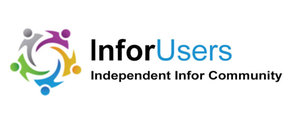The Problem: Digital Transformation Adoption May Create Provider Disruption Challenges
COVID-19 drove provider organizations to adopt new care delivery strategies based on digital technologies. Telehealth became a core environment for providing care services to patients. Organizations also realized that front-door mobile applications that connected to the organization’s web portal were becoming a critical feature to improving patient satisfaction.
Remote patient monitoring strategies also advanced during the pandemic. The ability to monitor a patient’s clinical status for a range of vital sign measurements provided timely insights that helped providers determine the best next steps for patient care. Does the patient need a telehealth session? Does the patient require a homecare visit? Does the patient need to go to an ED?
But provider organizations struggled to find digital solutions that were easy for both their employees and patients to learn. Frustrating patient experiences were usually associated with digital solutions that required native smartphone applications to be downloaded to the patient’s phone. Digital designs from millennials or generation Z software engineers may not have met boomer expectations.
The challenges with integrating digital platforms into providers’ enterprise environments also caused operational disruptions. In many cases, enterprise platforms could not accommodate integrating digital applications into the EHR workflows. So two different applications had to be used, one to evaluate the patient and another to deliver prescriptions, lab orders, or other therapy orders. This caused rework for double entry of patient data and complicated physician workflows.
The Solution: Five Suggested Processes
MIT Sloan Management insights suggest the five following processes for driving improved operational efficiencies for organizations:
- A customer experience that emphasizes emotional engagement and is further influenced by customer intelligence data. Healthcare organizations should design digital interactions with patients to be easy to use and to help drive self-management of their care. Digital data collected from patients could suggest medical content to support their health status, suggest patient support groups, or create the ability to generate medication refill alerts along with the links to complete the refills.
- Operations that are more connected, more dynamic, and more informed by data-driven decisions. Digital data from telehealth and remote patient monitoring should be integrated into enterprise data warehouse solutions to improve both data analytics and AI capabilities.
- An employee experience that provides workers the skills and the flexibility to adapt to change. Healthcare organizations must continue to improve their training programs to ensure all employees can effectively use digital applications to support care delivery and financial service workflows.
- A business model that embraces a multisided platform strategy and offers digital enhancements to existing capabilities. Healthcare organizations should continually monitor digital applications for replacing legacy applications and for providing the interoperability to accommodate operational efficiency.
- A digital infrastructure that consists of core back-end systems, external-facing applications and services, and an increasingly valuable data layer. Digital data streams must be integrated into enterprise data models. This becomes increasingly important as AI model use becomes more highly adopted by healthcare provider organizations.
The Justification: Provider Organization Viability Will Depend on Successful Digital Process Transformations
The ability to implement effective digital health applications into the care delivery or financial services processes of a healthcare organization should generate improved workflow efficiencies. This will reduce care cost, create additional patient information for analytics to support care management, and produce higher levels of patient satisfaction by accommodating more flexible healthcare services.
Patient’s expectations for being able to interact with their care providers in digital environments will continue to expand, especially if the patients had satisfactory experiences. If healthcare organizations move too slowly to accommodate new digital health solutions, patients may look to other providers for their healthcare needs or to retail pharmacies (e.g., Walgreens, Walmart, or CVS) to provide their nonacute healthcare services.
The Players: A Plethora of Solutions from Large Technology or Emerging Companies
Healthcare organizations will have several digital solution providers to choose to support their needs. Organizational risk aversion will play an important role in selecting these solutions. Key solutions will be based on telehealth and patient engagement.
- Representative Large Technology Companies: AWS Health, Google Health, Microsoft, Zoom, Epic, and Cerner.
- Representative Emerging Companies: Teladoc, SOC Telemed, Amwell, CareSimple, GetWellNetwork, Intrado, and Upfront.
Success Factors
- Healthcare organizations need to evaluate their enterprise application portfolios related to supporting telehealth and patient engagement processes with digital solutions.
- Legacy applications that are inflexible for incorporating new patient care of financial workflow processes should be replaced with digital solutions that improve workflow efficiencies.
- The digital solution market has a high-risk premium at this time. Organizations should create or increase funding for innovation centers to prototype digital solutions to reduce the risk of failure.
Summary
COVID-19 was a disruptive catalyst for healthcare organizations to more quickly adopt digital technologies that support the transformation of care delivery and financial services. Telehealth with remote patient monitoring and patient engagement solutions that improve operational efficiencies emerged as key focal points for improving workflow flexibility and cost reduction.
As healthcare organizations begin to transform their service processes, they must focus on impacts to the workforce, interoperability requirements, data aggregation and management, and meeting patient expectations for cost and service flexibility. IT governance and innovation centers will become key components for driving organization success in adopting and implementing digital health solutions.
IT governance should identify and evaluate digital solution needs that support care delivery and financial services. This evaluation should identify projected workflow process transformations, new data models to support analytics and AI, and training impacts related to the new digital solutions.
Innovation centers should be used to prototype the digital solutions the governance committee identifies for improving care and business processes to identify interoperability, usability, and potential ROI results.
Photo credit: Africa Studio, Adobe Stock


